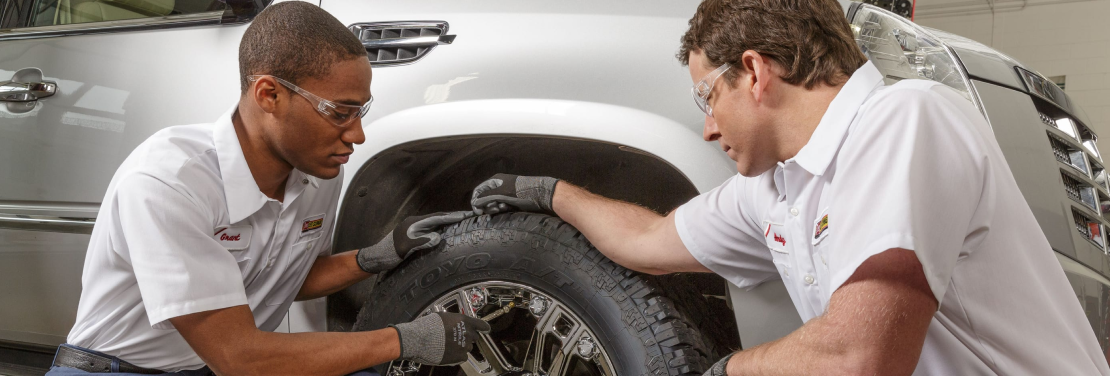Professional Morris Tire and Alignment Solutions: Make Sure a Smooth and Safe Drive
Professional Morris Tire and Alignment Solutions: Make Sure a Smooth and Safe Drive
Blog Article
Tire Solution: The Effect of Weather
When it comes to ensuring optimum efficiency and safety and security when driving, recognizing the influence of weather on tire solution is critical. From scorching heat to icy roads, each weather condition aspect can considerably influence tire functionality and total driving experience. By diving right into the impacts of differing climate conditions on tires, vehicle drivers can obtain beneficial insights that may boost their lorry's performance and long life. In this conversation, we will certainly discover the elaborate relationship between climate problems and tire service, clarifying the importance of weather-specific tire upkeep methods and factors to consider.
Warmth and Tire Efficiency
When revealed to heats, tires experience adjustments in performance that can considerably influence vehicle safety and security and handling. The warmth created from extended driving or hot weather problems creates the tire rubber to soften, resulting in reduced tread life and enhanced wear. As the rubber ends up being softer, the tire's grip on the road lessens, impacting stopping ranges and total grip. In severe instances, excessive heat can even trigger tire blowouts, posing a serious security risk to the automobile and its passengers.
Additionally, high temperature levels can speed up the procedure of tire aging, causing the rubber to deteriorate quicker. This can lead to splits, bulges, and other kinds of damages that jeopardize the structural stability of the tire. To minimize the impacts of warmth on tire performance, drivers must on a regular basis examine their tire pressure, turn tires to ensure even use, and inspect for any indications of damage. Additionally, utilizing tires especially made to stand up to high temperatures can aid preserve optimal performance and safety on the road.
Winter Results
Cold weather problems can have a significant influence on tire performance and security. As temperature levels drop, tire rubber can set, causing decreased traction on icy or snow-covered roads. In cool weather, tires might likewise lose atmospheric pressure much more quickly, which can impact handling and gas efficiency. Additionally, cold temperature levels can cause tire sidewalls to stiffen, raising the risk of damages from gaps or other road risks.
To reduce the impacts of cool weather on tires, it is important to frequently check tire stress and inflate them to the producer's recommended degrees. Utilizing winter season or all-season tires created for winter conditions can likewise improve grip and hold on icy or snowy roadways - tire shop morris. Proper tire upkeep, including normal assessments for wear and damages, ends up being much more critical during chillier months to ensure optimal efficiency and safety
Rainy Issues Effect
During stormy problems, tire performance and security can be considerably influenced by the wet road surfaces and decreased presence. The walk pattern of tires plays a critical role in preserving grip on wet roadways. Tires with damaged treads are more susceptible to hydroplaning, where a layer of water develops between the road and the tire surface area, leading to loss of traction. To fight this, vehicle drivers must frequently check their tires for adequate tread deepness and take into consideration spending in tires particularly designed for wet problems.

Snow and Tire Safety And Security
When driving in snowy conditions, having the ideal tires can make a substantial distinction in safety and efficiency. Winter tires are developed with special rubber compounds and tread patterns to supply far better grip on snow and ice contrasted to all-season tires.
Along with using winter season tires, it is vital to guarantee they are effectively blown up. Winter can click over here cause tire stress to go down, influencing grip and handling (morris tire and alignment). On a regular basis examining and keeping the right tire stress is necessary for optimum efficiency in snowy conditions

Weather-Related Tire Upkeep
Weather-related tire upkeep encompasses a range of methods aimed at ensuring optimum additional reading tire feature and look at this website longevity in various weather condition scenarios. One key facet of weather-related tire maintenance is tire stress guideline. Examining tire tread regularly and changing tires when tread wear gets to a certain deepness is important for maintaining grip and stability in negative weather.
Verdict
In verdict, weather conditions have a substantial impact on tire performance and security (tires morris il). From heat affecting tire pressure and use to cool weather decreasing traction, it is necessary to consider the weather when preserving and utilizing tires.
In this conversation, we will certainly discover the detailed relationship between weather problems and tire solution, shedding light on the importance of weather-specific tire maintenance practices and considerations.

Report this page